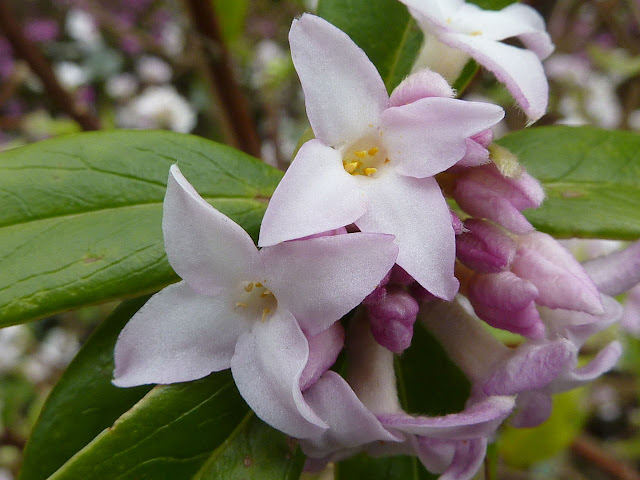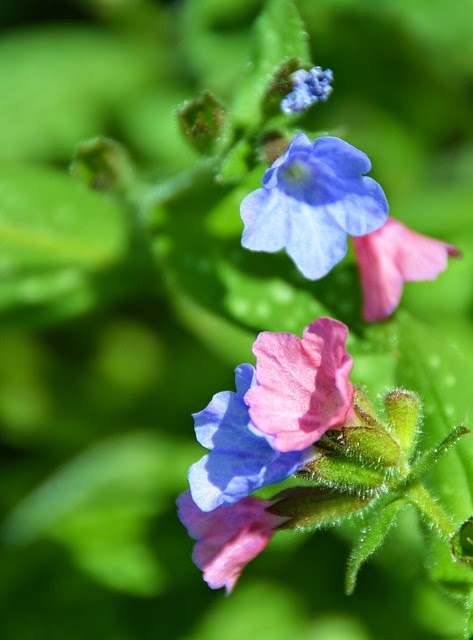
There are roughly 50-60 different varieties of the Evergreen and deciduous shrub Daphne, all of which belong to the Thymelaeaceae plant family. Daphne's are native across Eurasia and North Africa. They vary in size from small rockery or alpine sized plants to much larger ones suitable for a shrubbery or woodland area. The one pictured in this post is called Daphne bholua Jacqueline Postill. Most Daphne are scented but this particular variety is heavily fragrant.
Planting should be undertaken in Autumn, ideally in a humus rich well drained soil. They prefer a neutral PH value (6.0-7.0) that is, not to acidic or alkaline. Daphne's generally do well in sun or partial shade, but some varieties do better in full shade. Be sure to choose carefully where to plant your shrub simply because they sometimes do not do well being transplanted, so it's best to get it right first time. When you buy your Daphne be sure to choose a containerised not bare rooted one as they will generally do much better. As with all shrubs soak the root ball in a bucket of water prior to planting. Dig a hole twice the size of the pot or bare root and add in plenty of compost. Scatter a generous handful of fish blood and bone meal to give the plant a good start. In the first year keep the shrub well watered especially during the Summer months.
Most Daphne's are slow growing and pruning should only be required to keep your shrub in shape. Always do this after the plant has finished flowering. Lightly forking in a handful of general purpose fertilizer around the base of your shrub in the spring will help it grow and keep it healthy. Do add your favourite varieties and the ones you grow in the comments section.
General discussion and your views are welcome please say hello. I regret however because of my busy schedule, I am unable to answer many questions. Sneaky advertising will be deleted sorry. Thanks so much for visiting my blog today.

































